Are you curious about delving into the heart of Vietnamese agriculture? Can I Learn About Local Farming Practices And Rice Cultivation In The Paddies Around Tam Coc? At SIXT.VN, we can help you experience this firsthand by providing you with immersive tours that connect you with local farmers and their time-honored traditions in Ninh Binh. Discover the beauty of rural Vietnam, sustainable tourism, and explore eco-tourism in Vietnam.
1. Unveiling the Allure of Rice Cultivation in Tam Coc: A Journey Through Vietnamese Farming Heritage
Vietnam’s rice fields are a testament to the country’s rich agricultural heritage, offering breathtaking landscapes and a glimpse into the traditional rural lifestyle. The lush green terraces, cascading down mountainsides and stretching across valleys, showcase the harmonious relationship between humans and nature. For centuries, rice cultivation has been an integral part of Vietnamese culture, providing sustenance and driving economic growth. The picturesque views of endless green fields against dramatic backdrops attract visitors from around the world, eager to immerse themselves in the serene beauty and cultural richness of rural Vietnam. Tam Coc, with its unique blend of rice paddies and limestone karsts, presents an exceptional opportunity to witness and learn about local farming practices.
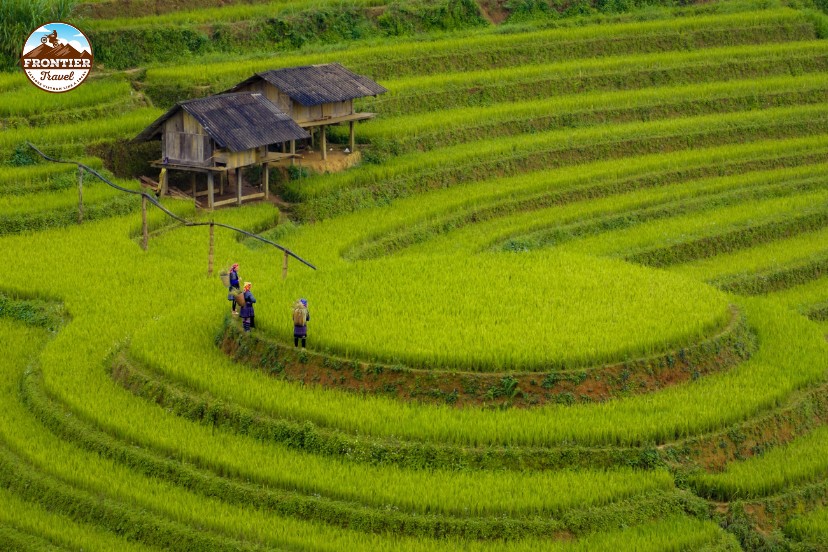 Overview of Vietnam Rice Fields
Overview of Vietnam Rice Fields
2. Where Can I Find the Best Rice Fields in Vietnam?
While rice fields can be found throughout Vietnam, certain regions offer exceptional experiences for visitors. Here are some of the most reputable locations recommended by the SIXT.VN team:
2.1. Sapa: Terraced Wonders in the Northern Highlands
Sapa, nestled in the Northern region of Vietnam, is renowned for its breathtaking terraced rice fields, well-preserved cultural lifestyle, and diverse ethnic minority communities. These fields are meticulously carved into the mountains by local ethnic groups, creating a stunning landscape that has captivated travelers for generations. Visitors can explore charming villages like Cat Cat, Ta Van, and Lao Chai, where the best viewpoints offer panoramic vistas of the terraced fields. According to a report by the Vietnam National Administration of Tourism in 2023, Sapa welcomed over 3 million visitors, highlighting its popularity as a destination for cultural and scenic experiences. The traditional farming methods and vibrant local culture provide a unique and immersive travel experience. Sapa experiences four distinct seasons, each offering a unique charm. Summer is warm and humid, while winter is dry and cold, with occasional snowfall. Autumn and spring are mild, with colorful foliage creating a perfect backdrop for hiking, trekking, and sightseeing.
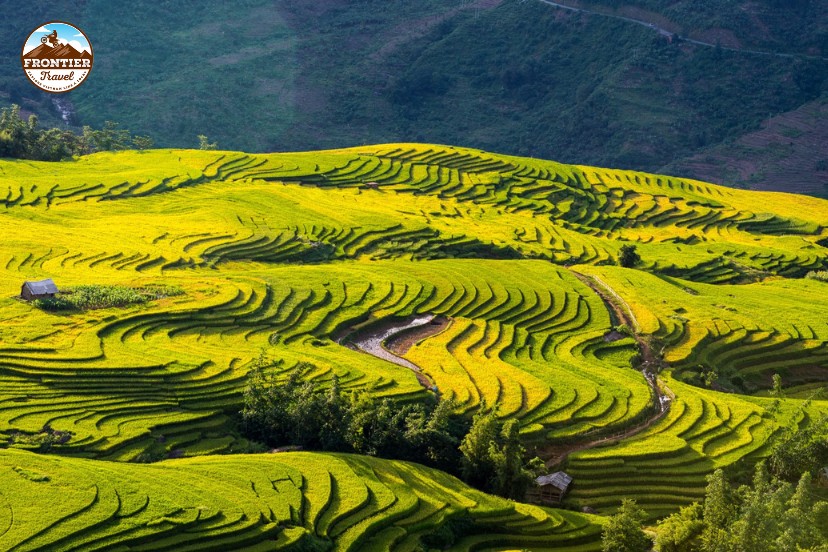 Sapa Rice Field
Sapa Rice Field
2.2. Mu Cang Chai: A UNESCO-Recognized Cultural Heritage
Mu Cang Chai, another northern gem, boasts a unique landscape of terraced rice fields that has been recognized by UNESCO for their cultural heritage. The annual Mu Cang Chai Rice Terrace Festival during the harvest season showcases local customs and traditions, preserving the ancient uniqueness of the area. According to UNESCO, the terraced rice fields of Mu Cang Chai represent a remarkable adaptation of traditional land use systems to the mountainous environment. The stunning beauty of Mu Cang Chai is often described as “too good to be true,” with fields that seem to merge seamlessly with the sky. Throughout the year, the terraces transform with the seasons. During the summer, they are covered with vibrant green rice plants. By early autumn, the plants turn golden yellow, signaling the harvest. In winter, the terraces are filled with water, creating cascading rows. Spring brings new life as farmers plant a new crop, transforming the terraces into hives of activity.
 Mu Cang Chai Rice Field
Mu Cang Chai Rice Field
2.3. Ninh Binh: A Surreal Landscape of Rice Paddies and Limestone Karsts
Ninh Binh is home to the stunning Tam Coc region, where rice paddies are interspersed with majestic limestone karsts, creating a dramatic and surreal landscape. Visitors can take boat tours through the paddies, gliding along the Ngo Dong River, and enjoy the scenic beauty of the water. According to TripAdvisor, boat tours in Tam Coc are consistently ranked as one of the top attractions in Vietnam, attracting visitors seeking both natural beauty and cultural experiences. Between May and June, during the planting seasons, traveling to Ninh Binh allows you to observe the meticulous farming practices of local farmers. Alternatively, during the harvest season from September to October, you can witness the wonderful transformation of the green landscape into a golden paradise. Ninh Binh rice fields exude a sense of tranquility and beauty, creating picturesque views of the harmonious coexistence between humans and nature.
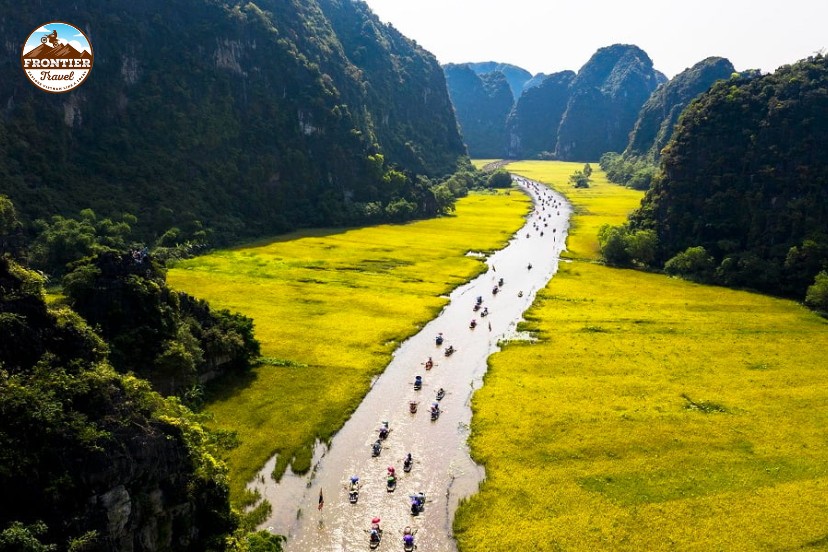 Ninh Binh Rice Field
Ninh Binh Rice Field
2.4. Ha Giang: Rugged Landscapes and Cultural Traditions
Ha Giang, located in the northern highlands near the Chinese border, offers rugged and pristine landscapes. The rice terraces in Hoang Su Phi, a district of Ha Giang, are particularly breathtaking. Hoang Su Phi is similar to Mu Cang Chai but with fewer tourists, offering a more authentic and unspoiled experience. The area’s dramatic terrain and vibrant cultural traditions make it a must-visit for adventurous travelers. Ha Giang enjoys pleasant weather, with a cooler and more refreshing climate compared to the bustling city. The region experiences four distinct seasons. Spring brings warmer temperatures and occasional showers. Summer is hot and humid with rain, transforming the rice terraces into lush green landscapes. Autumn offers clear skies and less humidity, turning the terraced fields golden yellow. Winter is dry, cold, and sunny, with occasional mist.
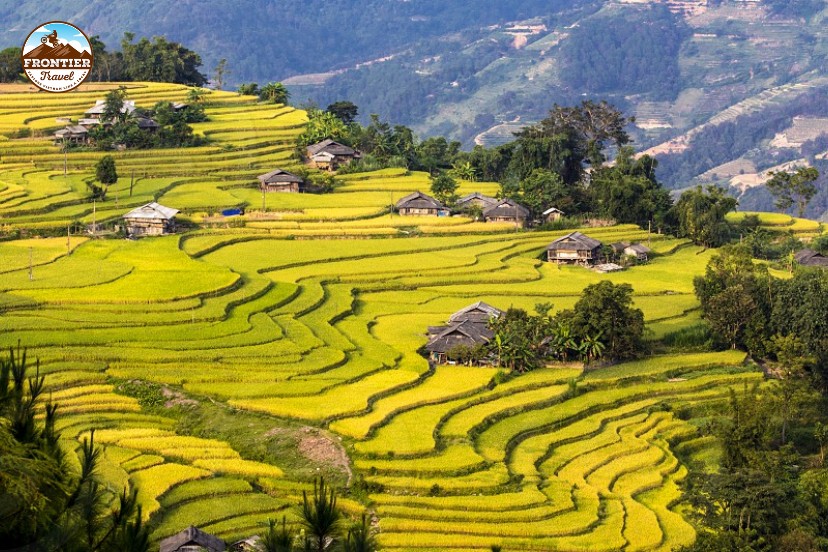 Ha Giang Rice Field
Ha Giang Rice Field
2.5. Mekong Delta: Vast Rice Paddies and Floating Markets
The Mekong Delta in Southern Vietnam is famous for its vast, flat rice paddies. The region is influenced by the Mekong River, which provides the necessary water sources for rice cultivation. Formed over centuries, the delta is shaped like a triangle and rich in alluvium, supporting the farming vocations of local residents. Floating markets and traditional farming practices add to the allure of this region, making it a unique destination for travelers. According to the Mekong River Commission, the Mekong Delta produces over half of Vietnam’s total rice output, highlighting its significance in the country’s agricultural economy. Enjoying a tropical climate, the Mekong Delta has distinct dry and rainy seasons. The dry season lasts from December to April, offering cooler and drier weather ideal for outdoor activities. The rainy season lasts from May to November, with frequent rainfall and higher humidity.
 Mekong Delta Rice Field
Mekong Delta Rice Field
3. What Is the Best Time to Visit Rice Fields in Vietnam?
To ensure the best possible experience when visiting rice fields in Vietnam, the SIXT.VN team has compiled a guide to the ideal timing for each region:
3.1. Northern Vietnam (Sapa, Mu Cang Chai, Ha Giang)
- Planting Season (April – May): Witness farmers preparing and working on the fields, gaining a unique insight into local agricultural practices.
- Green Season (June – July): Enjoy stunning views of lush green rice fields, perfect for photography.
- Harvest Season (September – October): Experience the bewitching transformation of the fields from green to golden as the rice ripens, creating a picturesque landscape.
To enhance your sightseeing experience, consider renting a motorbike to explore Sapa, Mu Cang Chai, and Ha Giang.
3.2. Central Vietnam (Ninh Binh)
The best times to visit Ninh Binh rice fields are from May to June and September to October. During these periods, the fields are vibrant and lush, and the weather is generally favorable for outdoor activities.
3.3. Southern Vietnam (Mekong Delta)
Rice fields in the Mekong Delta are cultivated year-round, but the rainy season from May to October offers the most lush and green views, along with opportunities for observing local farming practices. However, be aware that the weather during this time is humid and rainy, which may not be ideal for all outdoor activities.
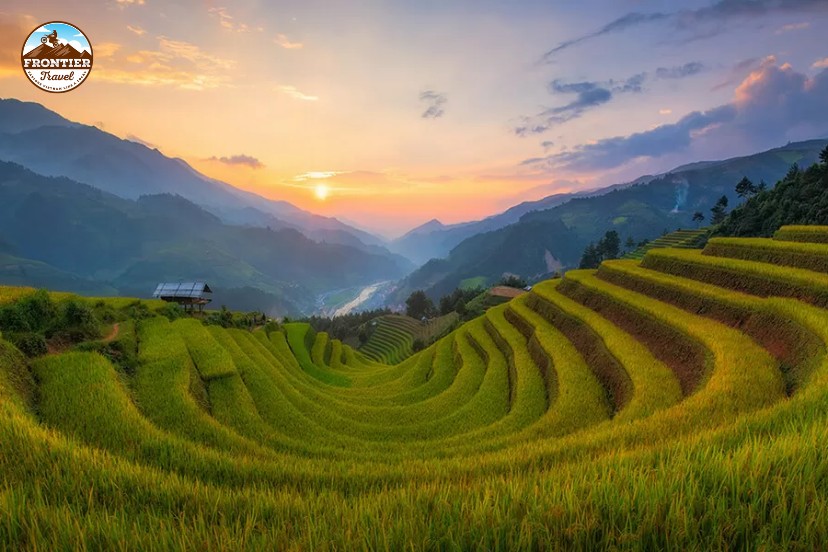 Best Time to See Rice Fields in Vietnam
Best Time to See Rice Fields in Vietnam
4. Can I Join a Tour to Explore the Rice Fields in Vietnam?
Depending on your preferences and familiarity with Vietnamese travel, you can choose between guided tours and self-guided tours. Each option offers a different experience and pricing.
4.1. Guided Rice Field Tours
For the most convenient experience, consider taking a guided tour with expertise in local knowledge, cultural insights, and safety. Reputable tour operators, such as SIXT.VN, offer packages that cover visits to the best rice field destinations. According to a survey by the Vietnam Tourism Association, 85% of visitors who took guided tours reported a higher level of satisfaction compared to those who traveled independently. Tour guides provide support from start to finish, ensuring a seamless journey.
4.2. Self-Guided Rice Field Tours
If you prefer independent travel or are familiar with Vietnamese travel, planning a self-guided tour is also an option. Ensure that your mode of transportation is reliable when renting a motorbike or hiring a car. Include essential stops on your itinerary and consider staying in local homestays to fully immerse yourself in the authentic local culture.
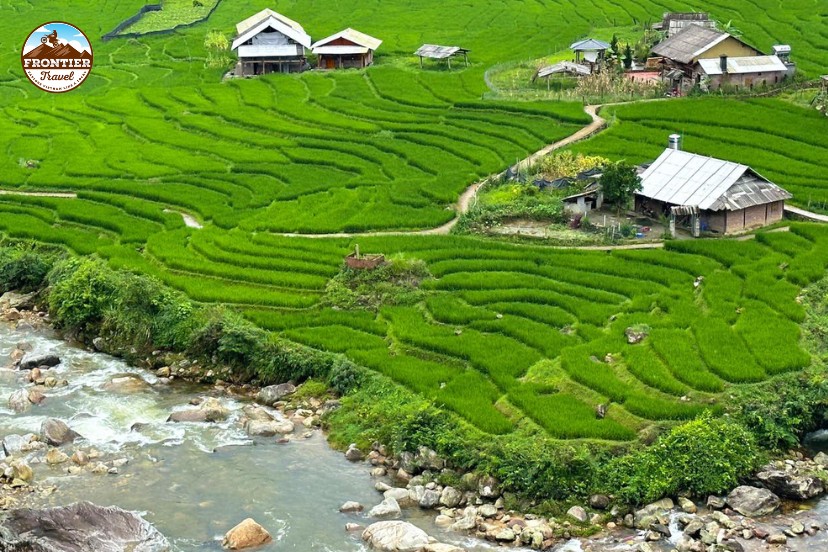 Vietnam Rice Field Tours
Vietnam Rice Field Tours
5. Practical Tips for Visiting Vietnam Rice Fields
To help you make the most of your rice field journeys, the SIXT.VN team offers some helpful tips regarding transportation, accommodation, cultural etiquette, and photography.
5.1. Transportation
The best way to reach different rice fields depends on your location. For Sapa and Mu Cang Chai, consider taking a train or bus from Hanoi. For Ninh Binh, a short train or bus ride from Hanoi is convenient. Ha Giang is best accessed by bus or motorbike from Hanoi for the most scenic experience. The Mekong Delta can be reached by bus or boat from Ho Chi Minh City.
5.2. Accommodation
Many options are available, ranging from homestays in local villages to hotels in nearby towns. Booking in advance, especially during peak seasons, is highly recommended.
5.3. Cultural Etiquette
- Respect local customs: When visiting villages, dress modestly and ask for permission before taking photos of people.
- Interaction guidelines: Be polite and respectful when interacting with locals. Learning basic Vietnamese phrases like “Xin chào” (Hello) and “Cảm ơn” (Thank you) will be appreciated.
5.4. Photography Tips
- Best times for photography: Early morning and late afternoon offer the best lighting conditions for photoshoots. Capture the golden hour during sunrise and sunset to enhance the beauty of the landscapes.
- Equipment recommendations: A wide-angle lens is ideal for capturing the vastness of the rice fields. If you travel alone, bring a tripod.
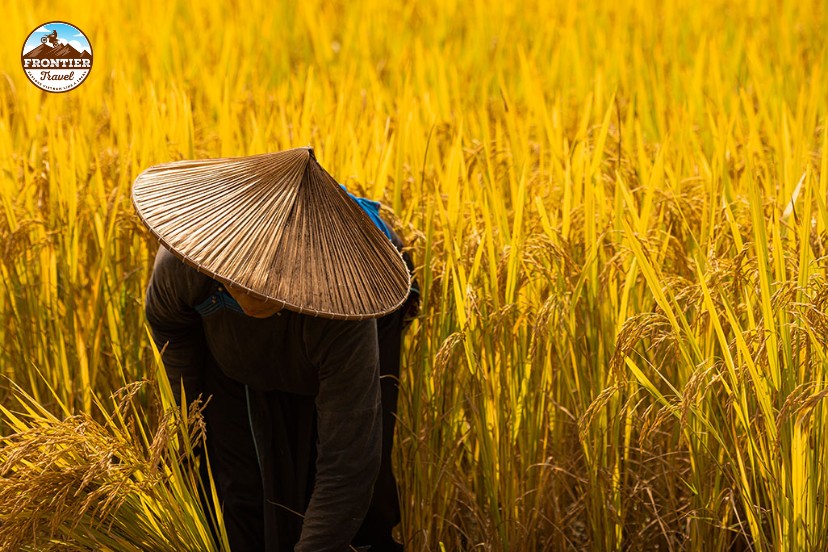 Tips for Visiting Vietnam Rice Fields
Tips for Visiting Vietnam Rice Fields
6. Understanding Local Farming Practices in Tam Coc
Tam Coc, often referred to as “Ha Long Bay on Land,” offers a unique opportunity to witness traditional Vietnamese farming practices amidst stunning natural beauty. The region’s farmers have developed ingenious methods to cultivate rice in the unique landscape, characterized by limestone karsts and waterways.
6.1. Traditional Farming Techniques
Farmers in Tam Coc still rely on traditional farming techniques passed down through generations. These methods are adapted to the region’s specific conditions and reflect a deep understanding of the local environment.
- Water Management: The Ngo Dong River and intricate canal systems are crucial for irrigating the rice paddies. Farmers carefully manage water levels to ensure optimal growth.
- Manual Labor: Much of the work, from plowing to harvesting, is done manually, showcasing the farmers’ dedication and hard work.
- Natural Fertilizers: Farmers often use natural fertilizers, such as compost and animal manure, to enrich the soil and promote healthy crops.
6.2. The Rice Cultivation Cycle
The rice cultivation cycle in Tam Coc typically involves two main crops per year, taking advantage of the region’s favorable climate and water resources.
- Land Preparation: The process begins with plowing the fields, often using water buffalo, to prepare the soil for planting.
- Seedling Transplantation: Rice seedlings are grown in nurseries and then transplanted to the paddies by hand, a labor-intensive but essential task.
- Irrigation and Maintenance: Farmers diligently irrigate and maintain the fields, ensuring adequate water supply and controlling weeds and pests.
- Harvesting: When the rice ripens, it is harvested manually using sickles, a process that often involves the entire family.
- Threshing and Winnowing: The harvested rice is threshed to separate the grains from the stalks, and then winnowed to remove impurities.
6.3. Challenges and Innovations
While traditional farming practices are still prevalent, farmers in Tam Coc also face challenges such as climate change, water scarcity, and market competition. To address these challenges, some farmers are adopting innovative techniques to improve productivity and sustainability.
- Integrated Pest Management: Farmers are increasingly using integrated pest management strategies to reduce reliance on chemical pesticides.
- Water-Saving Techniques: Techniques such as alternate wetting and drying (AWD) are being implemented to conserve water resources.
- Crop Diversification: Some farmers are diversifying their crops to reduce risks and increase income.
7. How Can I Experience Local Farming Practices Firsthand in Tam Coc?
Several options allow visitors to engage with local farming practices in Tam Coc:
7.1. Homestays and Farm Stays
Staying in a local homestay or farm stay provides an immersive experience, allowing you to live alongside farmers and participate in daily activities. You can learn about rice cultivation, help with planting or harvesting, and share meals with the family.
7.2. Guided Farm Tours
Several tour operators offer guided farm tours that provide insights into local farming practices. These tours often include visits to rice paddies, interactions with farmers, and opportunities to try your hand at traditional farming tasks.
7.3. Volunteering Opportunities
Some organizations offer volunteering opportunities on local farms in Tam Coc. This allows you to contribute to sustainable agriculture, learn about local culture, and make a meaningful impact on the community.
8. Responsible and Sustainable Tourism in Tam Coc
When visiting Tam Coc and engaging with local farming practices, it’s essential to practice responsible and sustainable tourism. This helps to minimize negative impacts on the environment and local communities while maximizing the benefits of tourism.
8.1. Respect Local Culture and Traditions
- Dress modestly when visiting villages and religious sites.
- Ask for permission before taking photos of people.
- Learn a few basic Vietnamese phrases to show respect and appreciation.
- Support local businesses and purchase handicrafts directly from artisans.
8.2. Minimize Environmental Impact
- Reduce your carbon footprint by using public transportation or renting a bicycle.
- Avoid single-use plastics and bring your own reusable water bottle and shopping bag.
- Dispose of waste properly and avoid littering.
- Choose eco-friendly accommodations and tour operators.
8.3. Support Local Economy
- Eat at local restaurants and try traditional Vietnamese dishes.
- Purchase souvenirs from local artisans and markets.
- Hire local guides and drivers.
- Donate to local charities and community projects.
9. Planning Your Trip to Tam Coc with SIXT.VN
SIXT.VN offers a range of services to help you plan your trip to Tam Coc and experience the beauty of Vietnamese rice fields.
9.1. Tour Packages
SIXT.VN offers customized tour packages that include visits to Tam Coc and other destinations in Ninh Binh. These packages can be tailored to your interests and budget, and include transportation, accommodation, and guided tours.
9.2. Airport Transfers
SIXT.VN provides convenient and reliable airport transfer services from Noi Bai International Airport (HAN) to Ninh Binh. This ensures a smooth and hassle-free arrival and departure.
9.3. Hotel Booking
SIXT.VN offers a wide selection of hotels and accommodations in Ninh Binh, ranging from budget-friendly guesthouses to luxury resorts. We can help you find the perfect accommodation to suit your needs and preferences.
9.4. Local Transportation
SIXT.VN can arrange local transportation services, including car rentals, motorbike rentals, and private drivers, to help you explore Tam Coc and its surrounding areas.
10. FAQs About Visiting Rice Fields in Vietnam
10.1. What is the best time of year to see rice fields in Vietnam?
The best time to visit depends on the region. Generally, the planting season (April-May), green season (June-July), and harvest season (September-October) offer the most scenic views.
10.2. Where are the most beautiful rice fields in Vietnam?
Some of the most beautiful rice fields are located in Sapa, Mu Cang Chai, Ninh Binh (Tam Coc), Ha Giang, and the Mekong Delta.
10.3. How can I get to the rice fields from Hanoi?
You can reach Sapa, Mu Cang Chai, and Ha Giang by train or bus from Hanoi. Ninh Binh is accessible by a short train or bus ride.
10.4. Can I visit the rice fields on my own, or should I join a tour?
Both options are possible. Guided tours offer convenience and local expertise, while self-guided tours provide more flexibility.
10.5. What should I wear when visiting rice fields?
Wear comfortable clothing and shoes suitable for walking. Dress modestly when visiting villages and religious sites.
10.6. Is it safe to travel to the rice field areas in Vietnam?
Yes, most rice field areas are safe for travelers. However, it’s essential to be aware of your surroundings and take necessary precautions.
10.7. Do I need a visa to visit Vietnam?
Most nationalities require a visa to enter Vietnam. Check the visa requirements for your country before traveling.
10.8. What is the local currency in Vietnam?
The local currency is the Vietnamese Dong (VND).
10.9. What language is spoken in Vietnam?
The official language is Vietnamese. English is spoken in tourist areas.
10.10. How can I book a tour to the rice fields with SIXT.VN?
You can visit the SIXT.VN website or contact our customer service team to book a tour or arrange other travel services. Address: 260 Cau Giay, Hanoi, Vietnam. Hotline/Whatsapp: +84 986 244 358. Website: SIXT.VN.
Vietnam’s rice fields offer a breathtaking sightseeing experience, along with a local atmosphere, culture, and lifestyle that should be on every traveler’s bucket list. Ready to discover the magic of Tam Coc and immerse yourself in the world of Vietnamese rice farming? Contact SIXT.VN today to start planning your unforgettable journey! Let SIXT.VN be your trusted partner in creating a seamless and enriching travel experience. From airport transfers to customized tour packages, we are committed to providing you with the highest level of service and support. Book your adventure now and unlock the beauty and wonder of Vietnam’s rice fields! Discover Vietnamese Rural Tourism and Ecotourism with SIXT.VN.



